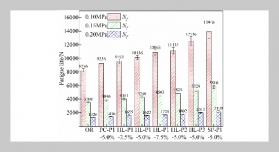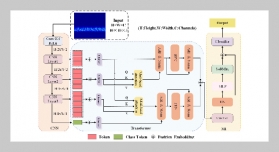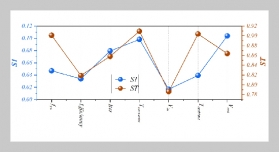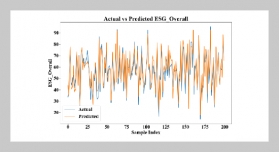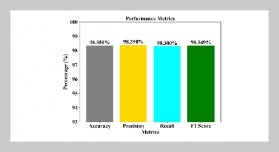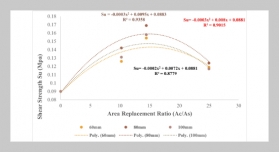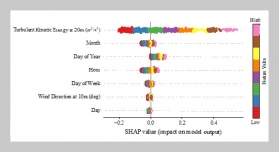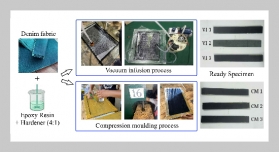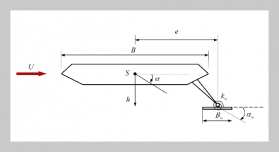REFERENCES
- [1] Sill, J. M. and Fear, E. C., “Tissue Sensing Adaptive Radar for Breast Cancer Detection—Experimental Investigation of Simple Tumor Models,” IEEE Transactions on Microwave Theory and Techniques, Vol. 53, No. 11, pp. 33123319 (2005). doi: 10.1109/TMTT. 2005.857330
- [2] Nikolova, N. K., “Microwave Imaging for Breast Cancer,” IEEE Microwave Magazine, Vol. 12, No. 7, pp. 7894 (2011). doi: 10.1109/MMM.2011.942702
- [3] Taylor, J. D., Medical Applications of Ultrawideband Radar, In Ultrawideband Radar: Applications and Design, pp. 285324, CRC Press (2012).
- [4] Menon, G. K., Skin Basics; Structure and Function, In Lipids and Skin Health, pp. 923, Springer International Publishing (2015).
- [5] Chu, D. H., “Development and Structure of Skin,” Fitzpatrick’s Dermatology in General Medicine, Vol. 1, pp. 5875 (2008).
- [6] Kleine-Ostmann, T. and Nagatsuma, T., “A Review on Terahertz Communications Research,” Journal of Infrared, Millimeter, and Terahertz Waves, Vol. 32, No. 2, pp. 143171 (2011). doi: 10.1007/s10762-010- 9758-1
- [7] McMillan, R. W., Advances in Sensing with Security Applications, Terahertz Imaging Milimeter-Wave Radar, Springer, Dordrecht, The Netherlands, pp. 126 (2006).
- [8] Aminzadeh, R., Saviz, M. and Shishegar, A. A., “Dielectric Properties Estimation of Normal and Malignant Skin Tissues at Millimeter-wave Frequencies Using Effective Medium Theory,” In Electrical Engineering (ICEE), 2014 22nd Iranian Conference, pp. 1657 1661 (2014). doi: 10.1109/IranianCEE.2014.6999804
- [9] Howard, D., “Structural Changes Associated with Ageing Skin,” Professional Beauty, Vol. Jun, pp. 6668 (2015).
- [10] Garrett, J. and Fear, E., “A New Breast Phantom with a Durable Skin Layer for Microwave Breast Imaging,” IEEE Transactions on Antennas and Propagation, Vol. 63, No. 4, pp. 16931700 (2015).
- [11] Gabriel, C., Gabriel, S. and Corthout, E., “The Dielectric Properties of Biological Tissues: I. Literature Survey,” Physics in Medicine and Biology, Vol. 41, No. 11, p. 2231 (1996). doi: 10.1088/0031-9155/41/11/ 001
- [12] Ikram, E., Sabira, K., Jahid Reza, K., Mijanur, M. and Moslemuddin, F., “Improved Debye Model for Experimental Approximation of Human Breast Tissue Properties at 6 GHz Ultra-wideband Centre Frequency,” International Journal of Engineering Technology, Vol. 5, No. 6, pp. 47084717 (2013).
- [13] Chahat, N., Zhadobov, M. and Sauleau, R., “Broadband Tissue-equivalent Phantom for BAN Applications at Millimeter Waves,” IEEE Transactions on Microwave Theory and Techniques, Vol. 60, No. 7, pp. 22592266 (2012). doi: 10.1109/TMTT.2012.2195196
- [14] Feldman, Y., Puzenko, A., Ishai, P. B., Caduff, A.,Davidovich, I., Sakran, F. and Agranat, A. J., “The Electromagnetic Response of Human Skin in the Millimetre and Submillimetre Wave Range,” Physics in Medicine and Biology, Vol. 54, No. 11, p. 3341 (2009). doi: 10.1088/0031-9155/54/11/005
- [15] Aminzadeh, R., Shishegar, A. A. and Saviz, M., “Numerical and Experimental Assessment of Millimeterwave Reflectometry for Non-invasive Diagnosis of Skin Cancers,” The 8th European Conference on Antennas and Propagation (EuCAP) (2014).
- [16] Khuda, I. E., Tahir, M. G. and Raza, K., “Novel Channel Impulse Response Equations of Normal and Malignant Skin at High Frequency mm-wave Band,” Science International (Lahore), Vol. 28, No. 2, pp. 885 889 (2016).
- [17] Engel, Y., Mannor, S. and Meir, R., “The Kernel Recursive Least-squares Algorithm,” IEEE Transactions on Signal Processing, Vol. 52, No. 8, pp. 22752285 (2004). doi: 10.1109/TSP.2004.830985
- [18] Haykin, S. S., Adaptive Filter Theory, Pearson Education India (2008).
- [19] Baraniuk, R. G., Burrus, C. S., Johnson, D. H. and Jones, D. L., “Sharing Knowledge and Building Communities in Signal Processing,” IEEE Signal Processing Magazine, Vol. 21, No. 5, pp. 1016 (2004). doi: 10.1109/MSP.2004.1328080


![Reflection coefficient for normal skin from [8] and designed FIR RLS filter. Improved Channel Impulse Response of Normal and Skin Containing Tumor at Millimeter Wave Spectrum Using Adaptive Filtering](/images/article_images/20/20_4_02.jpg)
